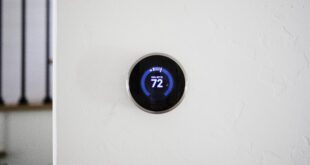ACEEE REPORT: U.S. BETTER OFF “THINKING BIG” ABOUT ENERGY EFFICIENCY INSTEAD OF FOCUSING FIRST ON DEVELOPMENT OF NEW ENERGY SOURCES

How Lack of Emphasis on Major Energy Efficiency Investments Leaves “3 Jokers in the U.S. Economic Deck”; Slashing Energy Use 60% Could Generate 2 Million Jobs & Save the Equivalent of $2600 Per Household Annually.
WASHINGTON, D.C.///January 12, 2012///America is thinking too small when it comes to energy efficiency, while also making the mistake of “crowding out” economically beneficial investments in energy efficiency by focusing on riskier and more expensive bids to develop new energy sources, according to a major new report from the American Council for an Energy-Efficient Economy (ACEEE).
Titled “The Long-Term Energy Efficiency Potential: What the Evidence Suggests,” the new ACEEE report outlines three scenarios under which the U.S. could either continue on its current path or cut energy consumption by the year 2050 almost 60 percent, add nearly two million net jobs in 2050, and save energy consumers as much as $400 billion per year (the equivalent of $2600 per household annually).
According to ACEEE, the secret to major economic gains from energy efficiency is a more productive investment pattern of increased investments in energy efficiency, which would allow lower investments in power plants and other supply infrastructure, thereby substantially lowering overall energy expenditures on an economy-wide basis in the residential, commercial, industrial, transportation, and electric power sectors.
ACEEE Director of Economic and Social Analysis John A. “Skip” Laitner said: “The U.S. would prosper more if investments in new energy were not crowding out needed investments in energy efficiency. The evidence suggests that without a greater emphasis on the more efficient use of energy resources, there may be as many as three jokers in the deck that will threaten the robustness of our nation’s future economy. These include the many uncertainties surrounding the availability of conventional and relatively inexpensive energy supplies, a slowing rate of energy productivity gains and therefore economic productivity, and a variety of potential climate constraints that may create further economic impacts of their own. Given all of this, large-scale energy efficiency advances are by far the smartest investment for America.”
ACEEE Executive Director Steven Nadel said: “Large-scale energy efficiency advances will require major investments. But the good news is that the investments will generate a significant return in the form of large energy bill savings. After paying for the program costs and making the necessary investments as we pay for them over time, the economy will benefit from a net energy bill savings that ranges from 12 to 16 trillion dollars cumulatively from 2012 through 2050. In other words, the energy efficiency scenarios outlined in our report will spur an annual net energy bill savings that might range up to about $2600 per household annually in constant 2009 dollars.”
Examples of potential large-scale energy efficiency savings identified by ACEEE include the following:
* Electric Power. Our current system of generating and delivering electricity to U.S. homes and businesses is an anemic 31 percent energy efficient. That is, for every three units of coal or other fuel we use to generate the power, we manage to deliver less than one unit of electricity to our homes and businesses. What the U.S. wastes in the generation of electricity is more than Japan needs to power its entire economy. What is even more astonishing is that our current level of (in)efficiency is essentially unchanged in the half century since 1960, when President Dwight D. Eisenhower spent his last year in the White House.
* Transportation. The fuel economy of conventional petroleum-fueled vehicles continues to grow while hybrid, electric, and fuel cell vehicles gain large shares, totaling nearly three-quarters of all new light-duty vehicles in 2050 in the report’s middle scenario. Aviation, rail, and shipping energy use declines substantially in this scenario through a combination of technological and operational improvements. In the most aggressive scenario, there is a shift toward more compact development patterns, and greater investment in alternative modes of travel and other measures that reduce both passenger and freight vehicle miles traveled. This scenario also phases out conventional light-duty gasoline vehicles entirely, increases hybrid and fuel cell penetration for heavy-duty vehicles, and reduces aviation energy use by 70 percent.
* Buildings. In residential and commercial buildings the evidence suggests potential reductions of space heating and cooling needs as the result of building shell improvements of up to 60 percent in existing buildings, and 70-90 percent in new buildings. The ACEEE scenarios also incorporate advanced heating and cooling systems (e.g., gas and ground-source air conditioners and heat pumps and condensing furnaces and boilers), decreased energy distribution losses, advanced solid-state lighting, and significantly more efficient appliances.
* Industry. In the industrial sector, energy efficiency opportunities reduce 2050 energy use by up to half, coming less from equipment efficiency and more from optimization of complex systems. The ACEEE analysis focuses on process optimization in the middle scenario, but also anticipates even greater optimization of entire supply chains in the most aggressive scenario, allowing for more efficient use of feedstocks and elimination of wasted production.
Are such advances in energy efficiency realistic?
As the ACEEE report points out, the U.S. already has achieved considerable advances in the energy efficiency context and is poised to do more: “The U.S. economy has tripled in size since 1970 and three-quarters of the energy needed to fuel that growth came from an amazing variety of efficiency advances—not new energy supplies. Indeed, the overwhelming emphasis in current policy debates on finding new energy supplies is such that emphasis on new supplies may be crowding out investments and innovations that can help to achieve greater levels of energy productivity. Going forward, the current economic recovery, and our future economic prosperity, will depend more on new energy efficiency behaviors and investments than we’ve seen in the last 40 years.”
For the full text of the ACEEE report, go to http://aceee.org/research-report/E121 on the Web.
 Alternative Energy HQ solar power for homes, wind energy, and bio fuel issues
Alternative Energy HQ solar power for homes, wind energy, and bio fuel issues







